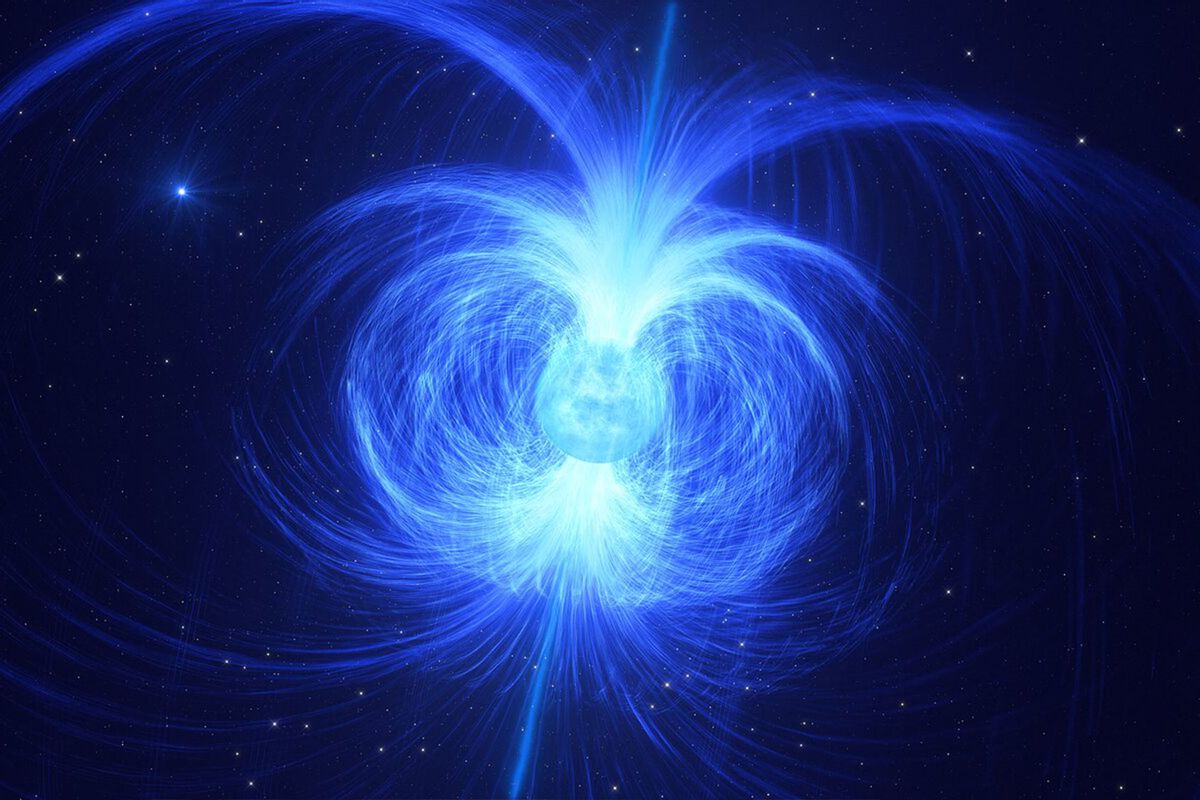When the roiling nuclear fusion inside of a star begins to die — gravity crushing into the star's waning fuel-store of hydrogen atoms, fusing them into heavier helium nuclei — the universe usually offers that star a couple of dignified options for meeting its end.
After its collapse and supernova finale, a star can become a dwarf (our sun's likely retirement), its quieted core a celestial memorial to past glory, aglow in the soft fading of residual heat. Or a star can collapse so dramatically it becomes a black hole. The weirdest stars, though, become neutron stars — dead stars so powerfully dense that even a single teaspoon of their material would have the same mass as 900 Great Pyramids of Giza.
Rarer still are the 10% of those dead neutron stars which mysteriously transform into what NASA calls the "superheroes of the star world" — the most terrifyingly powerful magnetic stars in the universe, called magnetars. For decades, scientists have been baffled by their births and sudden eruptions. But on Thursday, all that may have changed.
For the first time in history, scientists believe they've glimpsed a neutron star — the most magnetic ever discovered — on the verge of becoming a magnetar.
In an article published Aug. 17 in the journal Science, researchers detail their study of a star-pair known as HD 45166, discovered 100 years ago some 3,000 light-years from earth. They discovered one of the pair to be a particularly unusual Wolf-Rayet star. Its mass is twice that of our sun, but its magnetic field is an astounding 43,000 gauss, a unit for measuring magnetic induction. Compared to our sun's one gauss, this makes HD 45166 the most magnetic massive star ever discovered.
Lead study author Tomer Shenar, an astronomer at the Netherland's University of Amsterdam, was himself drawn toward the enigmatic object, transfixed.
"This star became a bit of an obsession of mine," Shenar said in a statement.
"I remember having a Eureka moment while reading the literature: 'What if the star is magnetic?',"
And, at the brink of unraveling one of astronomy's most mysterious origin stories, who wouldn't be obsessed? ESO astronomer Julia Bodensteiner, the study's Germany-based co-author, joked about the star's nickname among the team.
"Tomer and I refer to HD 45166 as the 'zombie star'," Bodensteiner said. "This is not only because this star is so unique, but also because I jokingly said that it turns Tomer into a zombie."
Although another theory holds that magnetars' transformation happens due to intense heat and rotation in its core, magnetars are difficult to hunt down and observe, making this theory hard to test. But HD 45166 stands out — and it couldn't be easily explained by previous models.
Shenar's obsession turned into globetrotting for he and his team. Driven by past research into helium-rich stars like HD 45166, Shenar had a hunch about why the star didn't fit the usual description.
"I remember having a Eureka moment while reading the literature: 'What if the star is magnetic?'" he said.
In February of 2022, the team's quest led them into the Pacific. Using the Canada-France-Hawaii Telescope at the Big Island's Mauna Kea Observatory, the team were able to measure HD 45166's magnetic fields — leaning on still more archival data from the La Silla Observatory in Chile, and confirmation of findings from the Royal Military College of Canada.
The obsession has paid off for Shenar and his team. For the first time, at least one clear line of observable, evidence-based theory can be drawn from supernova to monster magnetar — with an entirely new type of ultrahigh magnetic star in between which, as Shenar said, has "been hiding in plain sight all along."
Interestingly, the key to the researchers' theory is the duality of star-pairs — their merging is as much a part of the mystery as anything else.
"We propose that the magnetized Wolf-Rayet star formed by the merger of two lower-mass helium stars," the team wrote in the study.
It's not just enough for a star to collapse into a dead neutron star after a supernova. Rather, if two stars merge to become one — and then form a single, overwhelmingly powerful, magnetic core — then, when that unified star finally collapses, it will become a neutron star with all the hallmarks of a magnetar precursor.
We need your help to stay independent
"Stellar evolution calculations indicate that this component will explode as a supernova," the team wrote, "and that its magnetic field is strong enough for the supernova to leave a magnetar remnant."
There may yet be more than one way that magnetars are formed — and we won't be around to check the team's math when the Wolf-Rayet star finally collapses in approximately 1 million years. But, for now, Sheran and his team have brought us as close as we can get to the terrifying creation of the most powerful magnets in the heavens.
Read more
about space oddities, life on Mars, and the search for starmen



Shares